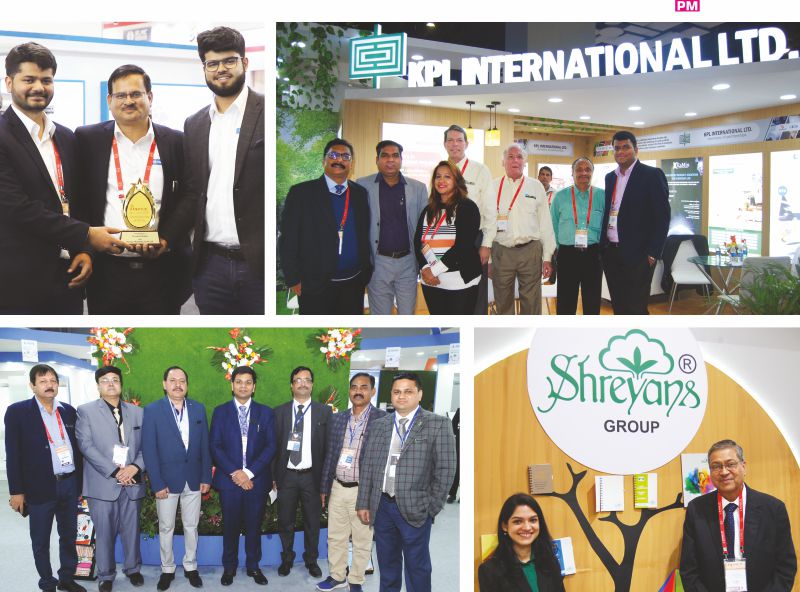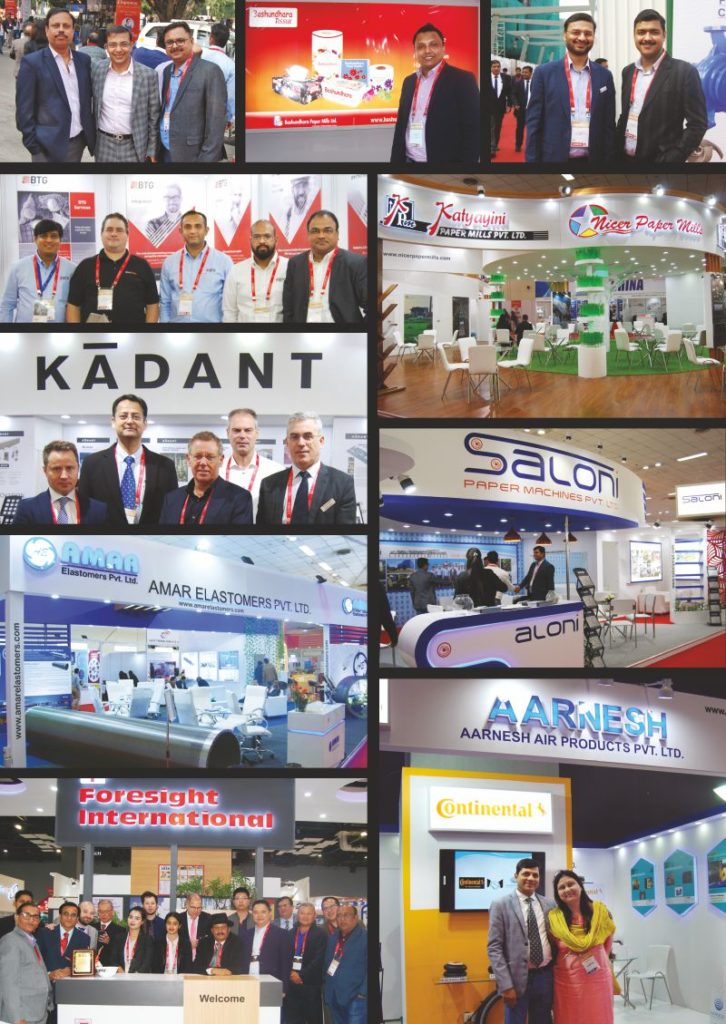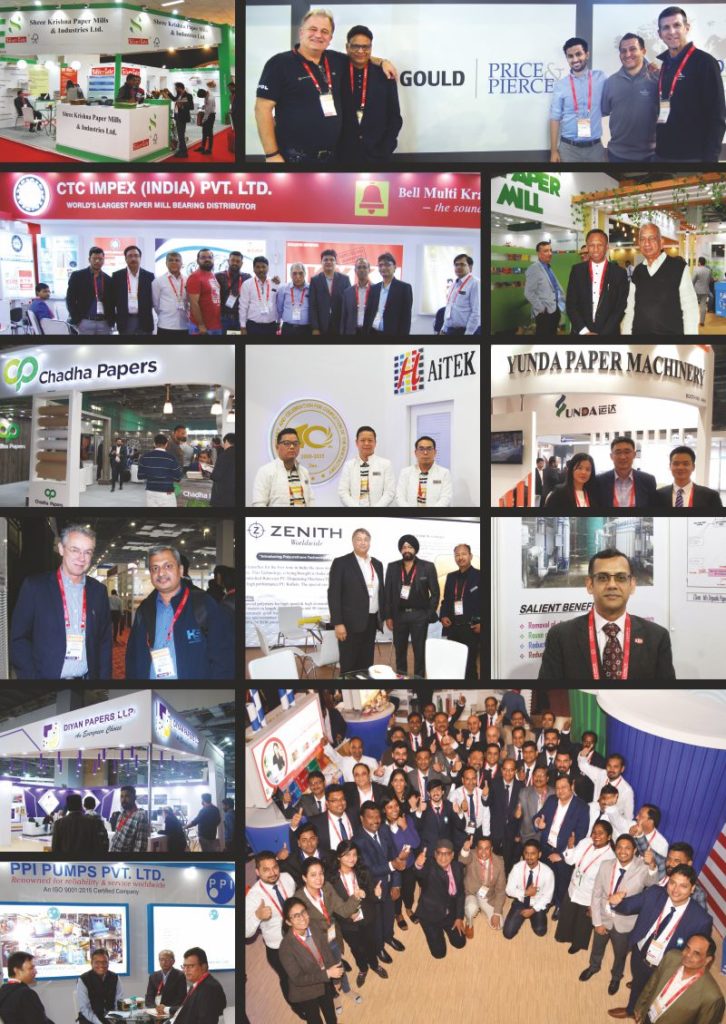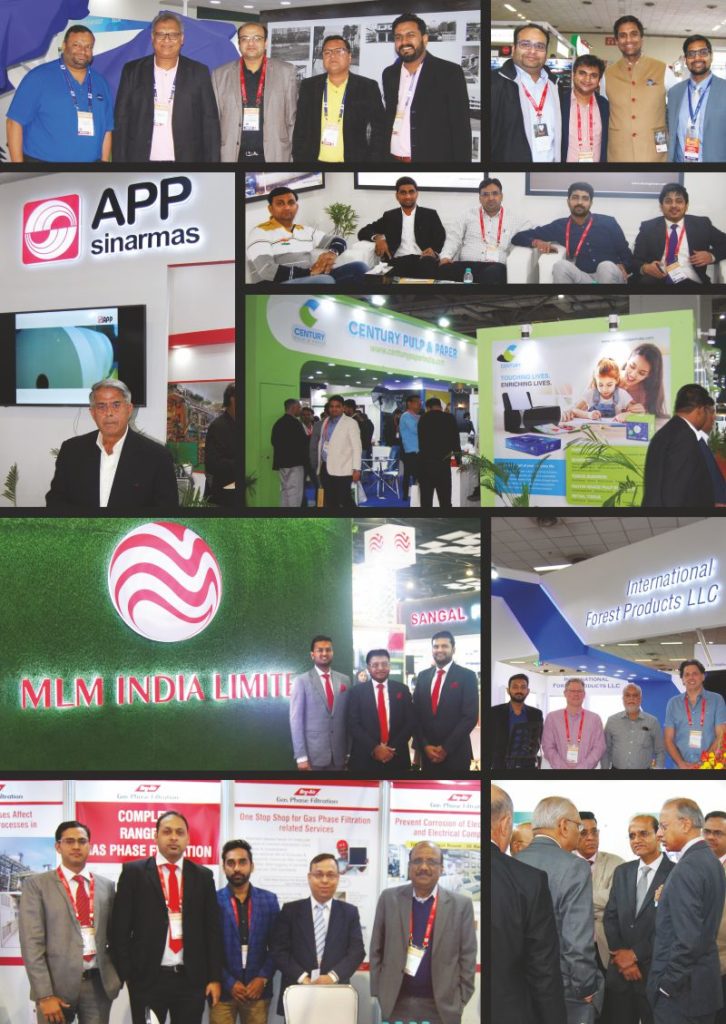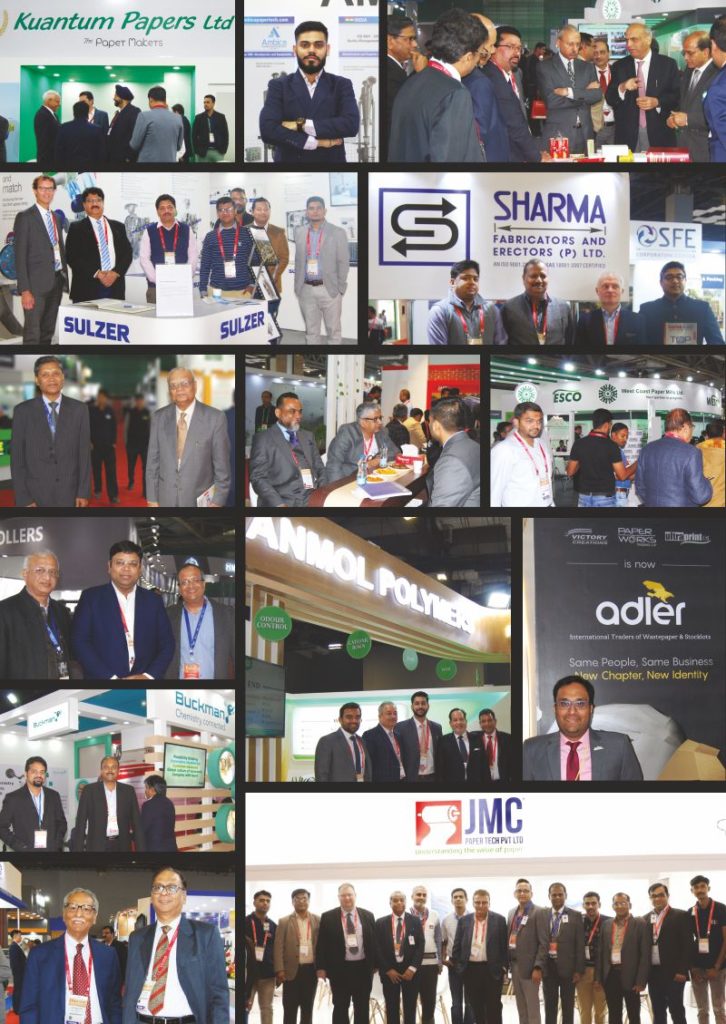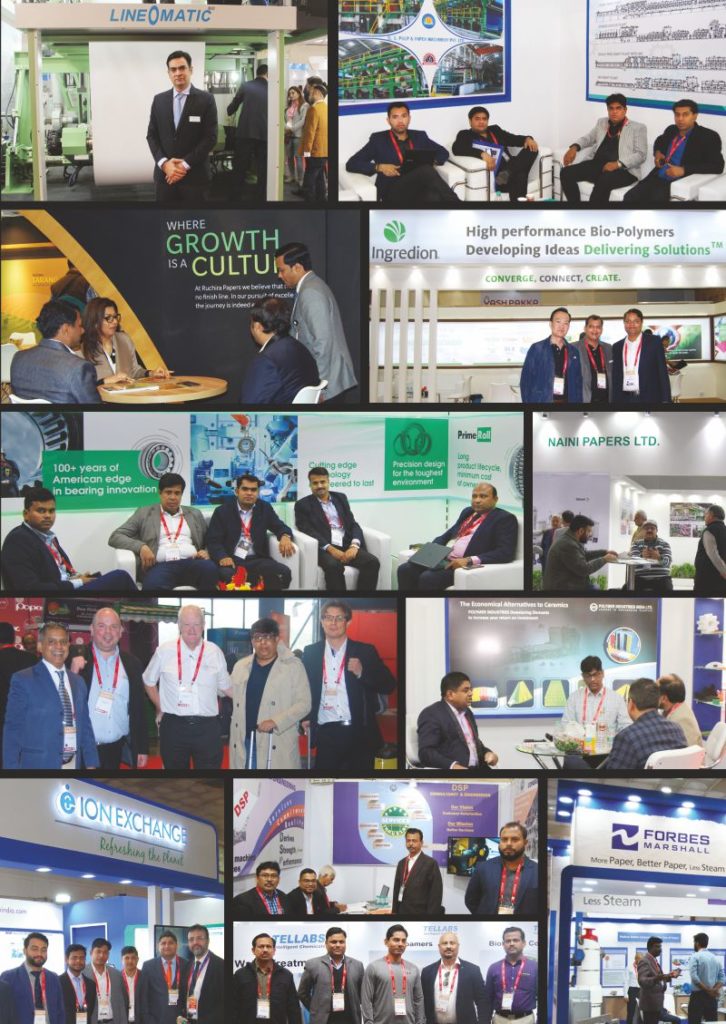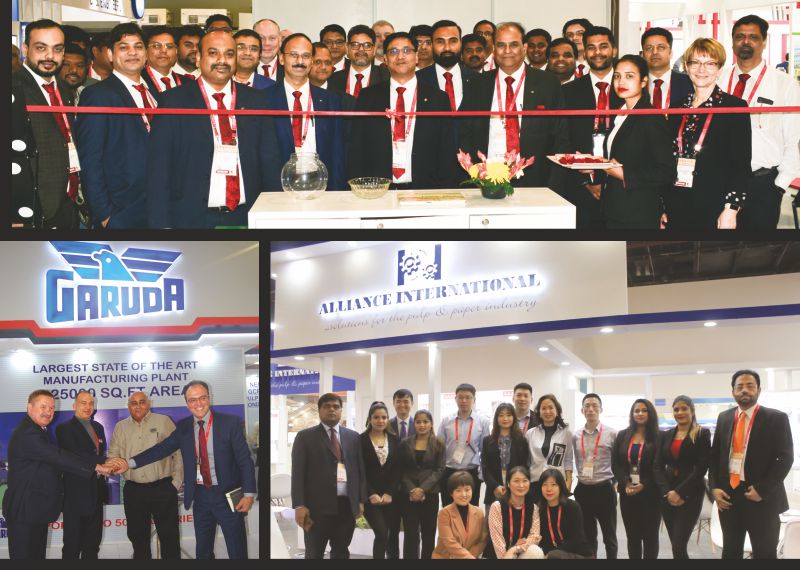

Paperex 2019, one of the biggest exhibitions organized worldwide, was held from 3 to 6 December 2019 at Pragati Maidan, Delhi. Organized by Hyve Group, this year’s exhibition saw participation from more than 700 exhibitors from across 25 countries. The four-day event showcased some of the latest technology, machinery and raw materials for paper production.
The 14th edition of Paperex, the biennial international exhibition and conference for the pulp, paper and allied industries, kicked off with a warm welcome address given by Pramod Agarwal, President, IARPMA.
The Current Market Condition
Speaking on the topic “Paper Industry in the Coming Decade”, N. Gopalaratnam, Chairman, Technical Committee, Paperex 2019, and Chairman, Seshasayee Paper & Boards Limited, shared his understanding of the current market condition of the Indian paper industry and the rising import of paper in the country. He also spoke about the other challenges the industry had been facing.
He said, “The global paper industry has been a growing industry of great prominence and social relevance for many decades. However, its growth rate has fallen sharply lately to about 1 percent annually from 2 to 3 percent in the 1990s. This significant drop has been caused by a fall in newsprint and writing and printing paper consumption, especially in North America and Europe. With the uncertainties in the geo-political scenario and the ongoing trade war between the US and China, the paper industry has been languishing in most of the key regions. Asia is a notable exception.
“Around 90 percent of the wood required for the industry comes from agro/farm forestry, an initiative of domestic paper manufacturers. This program of paper mills extends over 900,000 ha of land and provides jobs and livelihood to over 5 lakhs families.”
– N. Gopalaratnam

“Within Asia, India remains a bright spot and continues to be the fastest growing market for paper. The Indian paper industry has been growing at over 6 percent annually, and the market has hit around 20 million tonnes per annum. The per capita paper consumption in India is projected to touch 15 kg per year. The paper industry will continue to grow in the Asia region in the coming decade with India and China providing the momentum. The Indian paper market is set to grow by 1.2 million tonnes annually, and the domestic industry is gearing itself to meet this demand.
“The Indian pulp and paper industry has undergone considerable transformation in the recent past with the domestic industry investing over USD 5 billion in capacity addition, technology upgradation and strengthening of environmental protection interests. Simultaneously, in the minds of people, there has been considerable appreciation of the green nature of paper and paper products. Paper is made from renewable raw materials. It is reusable, recyclable and biodegradable. It has a benign footprint at the end of its life cycle.
“However, the Indian paper industry is currently under a great threat due to indiscriminate imports taking place on the domestic market. Armed with zero duty concession under FTA, ASEAN countries, who are known to be low-cost producers, have flooded the Indian market in the last five years. In fact, over 30 percent increase in the import of paper from these nations has been reported in the first six months – April to September – of the financial year 2019.

“The paper industry in India is essentially agro / farm forestry-based business with strong backward linkages with farmers and rural economy. Around 90 percent of the wood required for the industry comes from agro/farm forestry, an initiative of domestic paper manufacturers. This program of paper mills extends over 900,000 ha of land and provides jobs and livelihood to over 5 lakhs families. Indian paper mills have been participating in the development of the rural economy and greening of the nation through their tree farming efforts.
“The Indian paper market has, therefore, become the hunting ground for overseas players who are beset with the issues of mature domestic market and dwindling prospects of growth in their own economies. They are largely helped in their export efforts by low-cost production enabled by lower cost of wood. Imports in India rose by 30 percent in volume during the first half of the financial year 2019. Imports from China and ASEAN countries shot up by whopping 40 percent and 75 percent respectively. Such indiscriminate imports are hurting not only the interests of the domestic industry but also the livelihood of a large number of people. I believe that nearly one-third of the units of the industry have closed down unable to match the competition from imported grades. The industry is looking up to the government to provide some breathing space for the industry whose turnover is in excess of 60,000 crores and which employs over 5 lakhs personnel.”
The Newsprint Sector

Speaking on the status of newsprint in India, P. S. Patwari, Vice President, IARPMA, President, Indian Newsprint Manufacturers Association, and CEO & Executive Director, Emami Paper Mills Limited, said, “The Indian newsprint sector is an environment-friendly part of the Indian pulp and paper industry and lakhs of people are directly or indirectly employed in it. We collect wastepaper mainly from rag-pickers and turn it into fine newsprint. The Indian newsprint sector is surely accomplishing our Honorable Prime Minister’s dream mission of Swachh Bharat. Against our country’s total demand of newsprint to the tune of 25 lakh tonnes per annum or 2.5 million tonnes per annum, which is still growing, we produce less than 6 to 7 lakh tonnes per annum and the balance is met through imports though we have the full capacity in our country to fulfill the demand. Why has this happened?
“Against our country’s total demand of newsprint to the tune of 25 lakh tonnes per annum or 2.5 million tonnes per annum, which is still growing, we produce less than 6 to 7 lakh tonnes per annum and the balance is met through imports though we have the full capacity in our country to fulfill the demand.”
– P. S. Patwari

“About a year ago, the price of imported newsprint was to the tune of USD 750 per metric tonne, which was at par with the global price. But in the last one year, the price came down to less than USD 400 per metric tonne, whereas prices in the exporting countries remained in the range of USD 650 per metric tonne. In July 2019, the price of import was in the range of USD 450 per metric tonne and the government imposed 10 percent customs duty on the same for which we are very much thankful to our Honorable Prime Minister and his team.

“However, the price of newsprint plummeted to below USD 400 per metric tonne. The rampant dumping of newsprint at a very low price will surely kill the local newsprint industry. Therefore, we have requested the government to provide us with level playing field and to impose WTO-bound customs duty at 32.5 percent and anti-dumping duty on the same to save the local industry. This effort will also fulfill our honorable primer minster’s dream mission of ‘Make in India’.”
The Paper Industry: Challenges

Speaking about the challenges faced by the paper industry, A. S. Mehta, President, Indian Paper Manufacturers Association and President & Director, JK Paper Limited, said, “A lot of investment, technical upgradation and the capacity expansion have been done in the paper industry in a great manner. The last decade was a wonderful period for the Indian paper industry what with capacity expansion, innovations, new additions and upgradation of technologies; and that has helped the industry to be far more competitive today than it was earlier. As of now, the Indian paper industry has diversified sizes, scales of business and technologies in the country. The smallest mill might be of 5,000 to 10,000 tonnes and the biggest mill would be closer to 1 million tonnes.
“The Indian paper manufacturers have invested close to Rs. 25,000 crore in the last 5 to 7 years, and it is necessary that they have the right technology, right mix of raw materials and favorable governmental policies.”
– A. S. Mehta
“Indian paper mills need to achieve scale and upgrade their technologies so that in times to come, the domestic paper industry can become an open market, an open industry. We can’t exist in isolation. There will be the presence of all the global players; there will be competition. So we need to secure ourselves. All the time we cannot plead to the government to safeguard us. We need to be capable enough to safeguard our own interests.
“The Indian paper industry is growing and is therefore considered as the brightest spot for business globally. Elsewhere, the industry has not been growing and, in some sectors, it is de-growing. India is one of the markets that have rapidly grown in the last few years. And when a market grows, it starts attracting players from every part of the world. When the market is growing at something around 6 percent, it will attract many players. The size of the market is of course small but when it is growing, it will witness the presence of many players. The Indian paper manufacturers have invested close to Rs. 25,000 crore in the last 5 to 7 years, and it is necessary that they have the right technology, right mix of raw materials and favorable governmental policies.

“The industry has been facing the challenge of raw materials, and I must say that the present government has at least taken a look at this scenario. True, it is taking some time, but still the captive plantation policy and the collection of waste paper are drawing the government’s attention. And I am hopeful that in this area, some policy decision will be taken that will make captive plantation possible, which will make the cost of raw material far more competitive for the industry in times to come.
“The industry has been working closely to upgrade technology. I am sure that all of us will work in our own way so that we become sustainable; we work on plantations; and we work on conserving the resources – be it water or fossil fuel.”
Future Trends

The keynote address delivered by Praveen Singhavi, President, APRIL Group, on the inaugural day of Paperex 2019 was inspiringly informative. In his speech, he focused on the future trends in the pulp and paper industry and APRIL’s efforts to meet the sustainability challenge.
Speaking on macro trends in the industry, he said, “The world will consume 500 million tonnes of paper and paper board by 2030, up from 438 million tonnes in 2020, about 1.2 percent Compound Annual Growth Rate. This will be led primarily by emerging markets in China, India, the Middle East, Africa and Eastern Europe. Emerging market growth is expected to be about 2.3 percent in the next decade.
“This growth will be driven mainly by the demand for tissue, carton board and container board, which is expected to grow by 2.4 to 2.8 percent. With increasing concerns about plastics, I am sure that paper demand will grow even further.”
According to Mr. Singhavi the emerging market consumption of paper, tissue and board per capita currently lags behind that of the mature markets. “This further implies that emerging markets have vast room for growth. Consumption of paper, tissue and board per capita in 2018 in mature markets, in North America, Japan and Western Europe, was around 200 kg. In emerging markets, in China, India, the Middle East, Africa and Eastern Europe, consumption of paper, tissue and board per capita is rather low, much less than 70 kg,” said Mr. Singhavi.

“In India, particularly, consumption is 14 to 15 kg per capita, half of Indonesia’s consumption today. So, I’m pretty much sure that India will play a significant role in the future for the growth of the paper industry,” he added.
According to Mr. Singhavi, India would require nearly 27 million tonnes of paper and board in 2030, 6.8 million tonnes more than the present requirement. The key demand drivers would be packaging and uncoated wood-free paper. There would be an additional demand of 1 million tonnes of uncoated wood-free paper, 1.3 million tonnes of carton board and 2.6 million tonnes of container board. So, the paper industry in India would see a lot of growth in the coming years.
Seizing Opportunities, Finding Right Solutions
Chief Guest Harsh Pati Singhania, Vice Chairman & Managing Director, JK Paper Limited, said, “India is perhaps the fastest growing paper market in the world. By size, it may be significantly smaller than other markets but what essentially is happening is that the growth of this industry is moving from the developed world to the developing world. North America and Europeans paper markets are declining, whereas markets in Asian countries and some Latin American economies are progressing.
“Ban on plastic offers the paper industry a tremendous opportunity; however, the real opportunity in this area can be seized only if the industry comes up with solutions that are not only cost-effective but also as functionally effective as plastic.”
– Harsh Pati Singhania

“The challenge in India is that our market has been rather fragmented. In addition, we use all sorts of raw material and the size and scale of our business is diverse. This happened in China, but the market there is consolidating today. Inevitably, some of this will happen in our country as well. So, the real challenge is how to meet this growing demand – and that is good news for the industry. It should be noted that there has been a dramatic decline in the consumption of newsprint on the western market. India is perhaps one of the few markets where newsprint consumption is still growing, albeit at a slower pace, due to growing literacy, thrust on education and the growing number of vernacular newspapers and magazines. The real challenge that we now face is how to service this growing market, which is modernizing rapidly. How should we use the multiplicity of our raw material? How do we get appropriate and cost-effective technologies that allow mills to produce efficiently in terms of efficient cost?
“There have been talks about the challenge of rising imports in our country. Part of this issue can be attributed to the non level playing field we have in our country, where we have input factor costs that are far greater than those in other countries causing us to suffer a much higher cost of production. But on the other hand, there is efficiency that comes with size and scale and proximity with raw materials and markets. These will take their own time but they need to be addressed as well.
“Now, if you look at the agro-based industry, you will see that it has been doing a great job: It turns waste into productive things. However, the quality of paper produced from agro-based residues is quite different from the quality of paper produced from wood-based material. Depending on the nature of the business on the market, we have to produce paper that suits the needs of the customers. To do this, we have to develop technologies here in India itself. We cannot get the technologies we need from developed countries because they don’t face the problems that we have in India.
“The industry also needs skilled people and for that to happen we need good technical institutes that can prepare people to overcome the issues the industry faces today. We don’t need only pulp and paper technologies. We also need people who can go for innovation and R&D for the growth of the pulp and paper industry. Also, we need to innovate and develop on the market front – on the front end itself.
“In India, governments have drawn up legislation against single-use plastic. All major corporations are talking about how they can reduce the use of plastic. This is happening in India; this is happening globally. Ban on plastic offers the paper industry a tremendous opportunity; however, the real opportunity in this area can be seized only if the industry comes up with solutions that are not only cost-effective but also as functionally effective as plastic.

“The good news is that the Indian paper industry can be competitive, but this knowledge is not going to be enough unless we work on the front end and with the customers to develop solutions for them and on the back end – on the plantation side, for example. Let me tell you that JK Paper has succeeded not by putting plants and machinery. One of the major reasons why JK Paper has succeeded is its focus on plantations – continuous focus on developing quality plantations that would give us better yield and that are in greater proximity with our factories. In our country, unfortunately, we do not have a plantation policy. So, we cannot grow raw material on a scale that is large enough to give us competitive quantities.
“There are many other issues that the industry faces today. We need to look at all the issues that affect the industry, and we need to find our own solutions. Also, we need to work much more closely with our customers. The consumers and the manufacturing industry must work far more closely if we want to get the right solutions. We also need to keep in mind that times have changed and so trade must find its own model which is different from the one it had in the past. As you already know, we have to pay our taxes. We therefore need to align our business model accordingly – whether we are traders, manufacturers or consumers. In that equation, we have to find our own place.”
